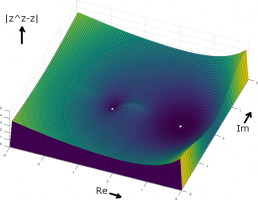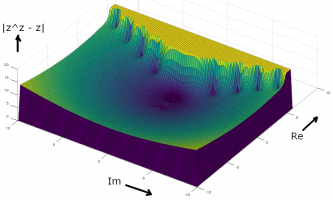BigBeachBanana
Senior Member
- Joined
- Nov 19, 2021
- Messages
- 2,276
You're correct that without the absolute value, you're implying [imath]x>0[/imath] only, but you can do without it. You're going to have to consider 3 cases.Those are the only ones I found. How can you tell if there's more, or not?
The reason I introduced the absolute value right off the bat is that, without it, I'm only assuming x>0, which cut off the other branch of the solution, i.e. x<0. I didn't consider that it would introduce the extraneous solution(s). However, from the check, in this case, it didn't. Is there a better way to solve it?
1) For [imath]x>0[/imath]:
[math]\log x\times(x-1)=0 \implies x=1[/math]2) For [imath]x<0[/imath], multiply both sides by -1:
[math]-x^x=-x\\ (-x)^x=-x\\ x\log (-x)=\log(-x)\\ x\log (-x)-\log(-x)=0\\ \log(-x)\times(x-1)=0 \implies x=\pm 1[/math]3) For [imath]x=0[/imath], we get [imath]0^0[/imath], which can be undefined or 1. In either case, it's not a solution.



